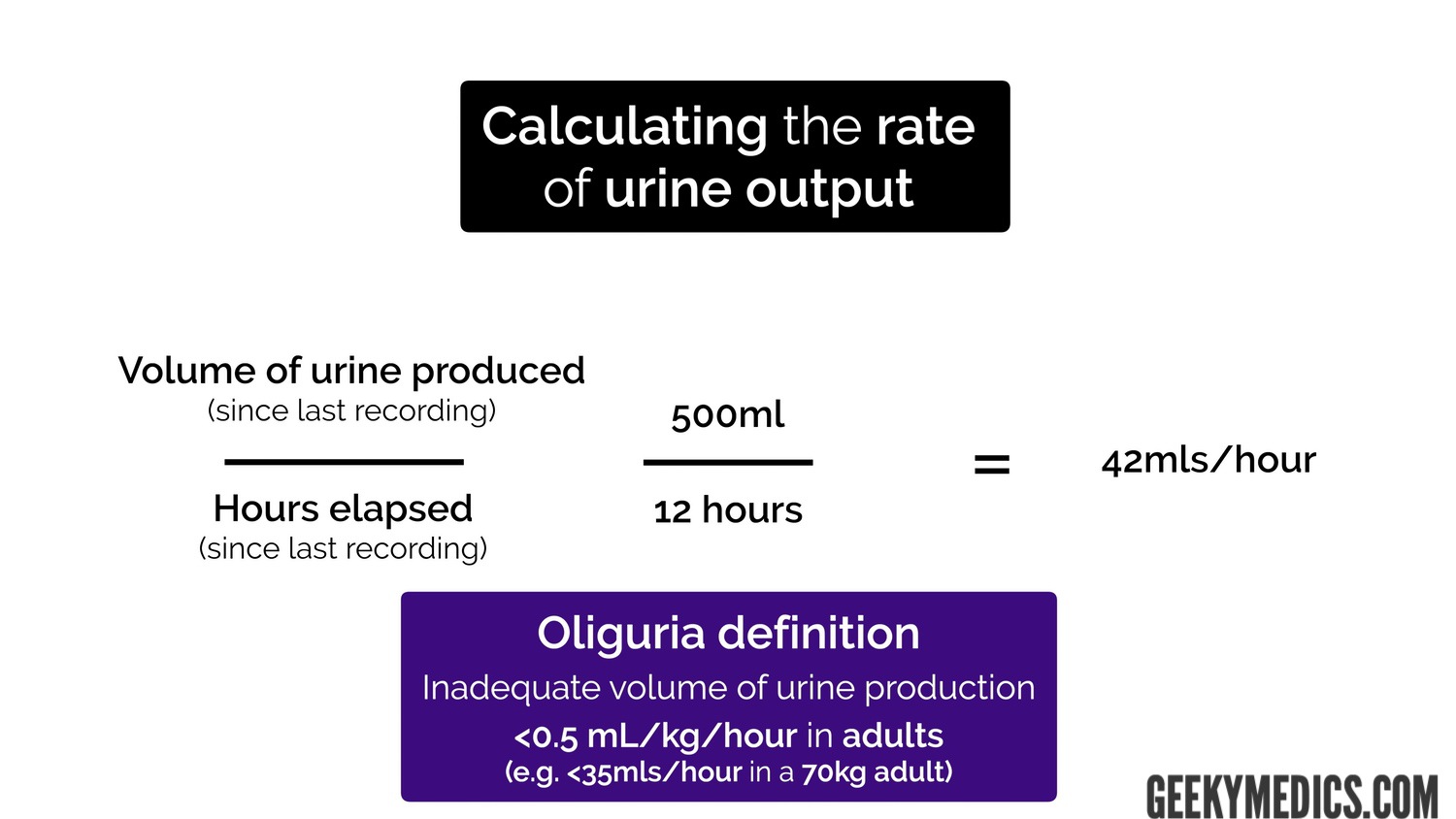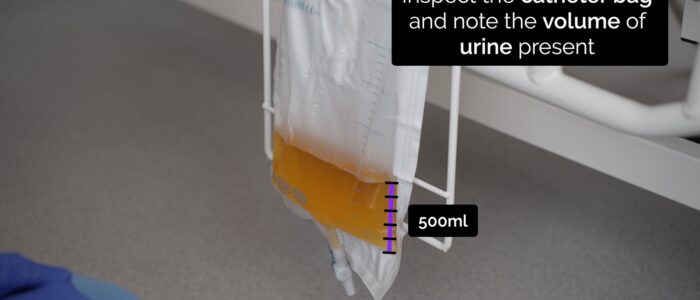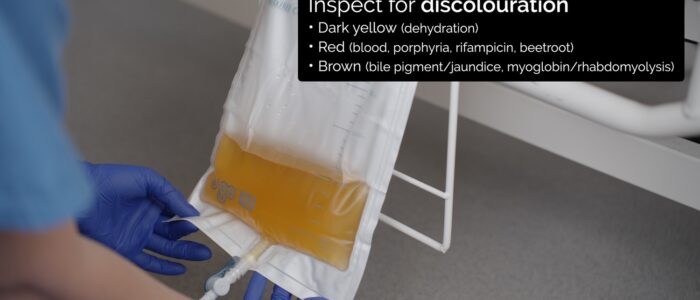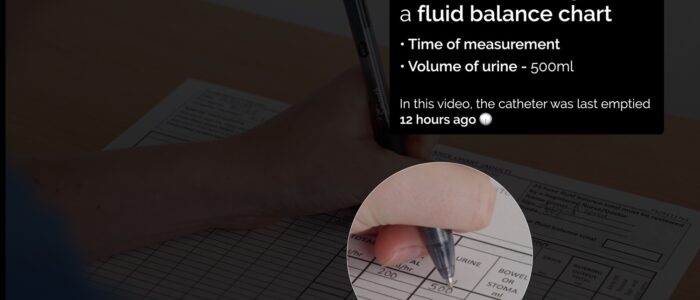- 📖 Geeky Medics OSCE Book
- ⚡ Geeky Medics Bundles
- ✨ 1300+ OSCE Stations
- ✅ OSCE Checklist PDF Booklet
- 🧠 UKMLA AKT Question Bank
- 💊 PSA Question Bank
- 💉 Clinical Skills App
- 🗂️ Flashcard Collections | OSCE, Medicine, Surgery, Anatomy
- 💬 SCA Cases for MRCGP
To be the first to know about our latest videos subscribe to our YouTube channel 🙌
The ability to accurately measure and record urine output is a key clinical skill all healthcare professionals should possess. The rate of urine output can provide insights into how well the kidneys and other organs are being perfused, allowing for early recognition of deteriorating patients (e.g. sepsis, haemorrhage).
This guide provides a step-by-step approach to measuring and recording urine output.
Gather equipment
Gather the relevant equipment for measuring urine output:
- Urine output recording document
- Measuring device: either a 1000 mL graduated cylinder for a patient using a bedpan or a collection bag for a patient with an indwelling catheter
Introduction
Wash your hands and don PPE if appropriate.
Introduce yourself to the patient including your name and role.
Confirm the patient’s name and date of birth.
Briefly explain what the procedure will involve using patient-friendly language: “Today, I would like to measure your urine output. This will involve measuring how much urine is present in your bedpan to get an understanding of how well your kidneys are working.”
Gain consent to proceed with urine output measurement.
Obtaining the sample
Urine may initially be obtained in a number of ways including:
- An indwelling urinary catheter
- Bedpan (for immobile patients)
- Various other types of urinary collection containers that the patient may use themselves if able to
Measuring & recording output
Urinary catheter
If the patient has a urinary catheter in place, then urine output can be measured by observation of the measurement markings on the collection device.
Some catheters have a single bag which all urine drains into immediately, whereas others have a separate chamber that urine drains into first. This first chamber can then be emptied by opening the valve, allowing the urine to move into the larger catheter bag.
Catheters with a separate measurement chamber can make it easier to assess a patient’s rate of urine output.
To measure the patient’s urine output:
1. Note the time at which the patient’s catheter bag/chamber was last emptied.
2. Inspect the catheter bag/chamber at eye level and note the volume of urine present (typically in millilitres).
3. Record the volume of urine on the relevant urine output chart and the time of the measurement. You should also calculate the rate of urine output (see below).
4. If the catheter bag is full, this should be emptied after your recording. If the patient has a separate urine collection chamber device, the valve should be opened to allow the chamber to empty into the catheter bag and the valve should then be closed.
Other urinary collection devices
If the patient does not have a catheter and urine is instead being collected in a container (e.g. bedpan) you can measure the urine output as follows:
1. Note the time at which the patient last passed urine.
2. Don gloves
3. Carefully pour the contents of the urine collection container into a graduated measurement cylinder. Ensure there is no splashing or spilling of the bedpan contents.
4. Inspect the graduated measurement cylinder at eye level and note the volume of urine present (typically in millilitres).
5. Dispose of the urine into a toilet and clean the graduated measurement cylinder appropriately.
6. Remove and appropriately dispose of gloves and wash your hands.
7. Record the volume of urine on the relevant urine output chart and the time of the measurement. You should also calculate the rate of urine output (see below).
Calculating the rate of urine output
To calculate the rate of urine output, divide the volume of urine produced by the number of hours that have elapsed since the bag/chamber was last emptied (e.g. 80ml over 2 hours = 40ml/hour).
Normal urine output in a healthy individual should be between 0.5-1.5 mL/kg/hour, and patients should generally be urinating at least every 6 hours.1
Oliguria is defined as the production of inadequate volumes of urine (<500 ml/day in adults, <0.5 mL/kg/hour in children, and <1.0 mL/kg/hour in infants).1

To complete the procedure…
Explain to the patient that the procedure is now complete.
Discuss the urine output result with the patient, including any further steps that may need to occur (e.g. further investigations, initiation of intravenous fluids).
Thank the patient for their time.
References
- Centers for Disease Control and Prevention. Urine Output. 2020. Available from: [LINK].












